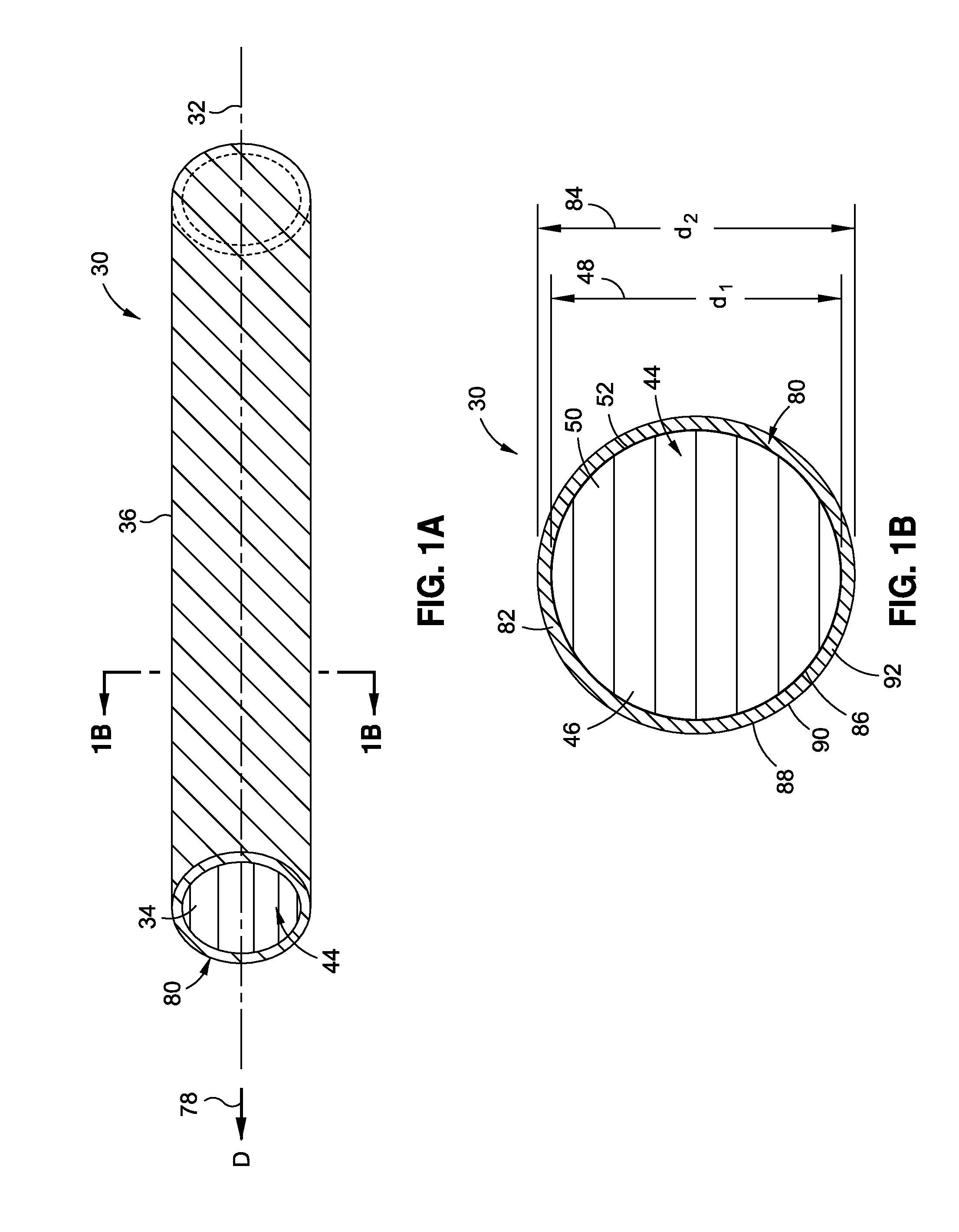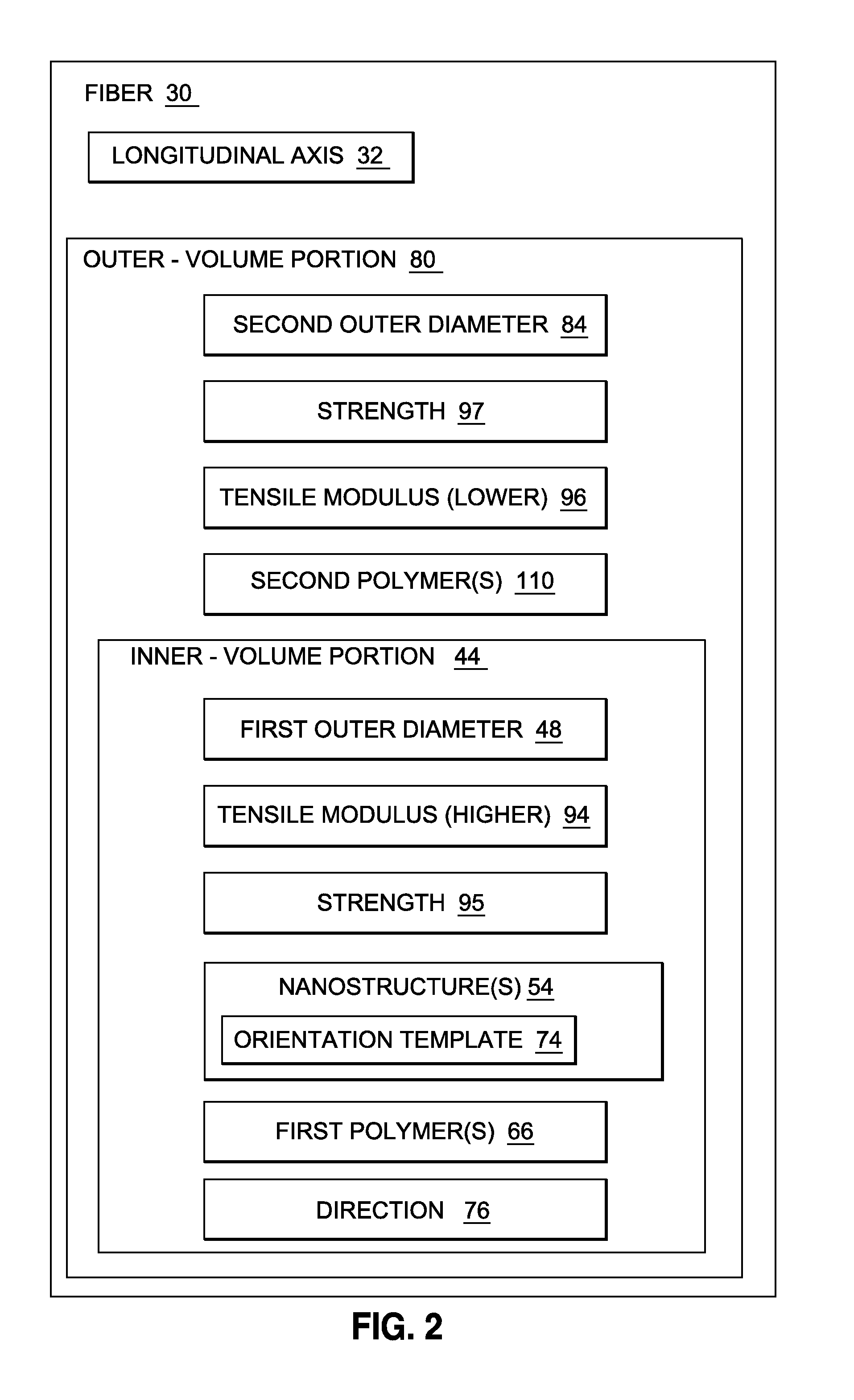Fiber with Gradient Properties and Method of Making the Same
a fiber and gradient technology, applied in the direction of yarn, synthetic resin layered products, transportation and packaging, etc., can solve the problems of limiting the benefits of such higher-performance fibers, limiting the interface properties of high-moduli and strength carbon fibers, and known methods may not overcome the susceptibility to decreased interface properties between fibers and matrixes
- Summary
- Abstract
- Description
- Claims
- Application Information
AI Technical Summary
Benefits of technology
Problems solved by technology
Method used
Image
Examples
Embodiment Construction
[0027]Disclosed embodiments will now be described more fully hereinafter with reference to the accompanying drawings, in which some, but not all of the disclosed embodiments are shown. Indeed, several different embodiments may be provided and should not be construed as limited to the embodiments set forth herein. Rather, these embodiments are provided so that this disclosure will be thorough and complete and will fully convey the scope of the disclosure to those skilled in the art.
[0028]Now referring to the Figures, in an embodiment of the disclosure, as shown in FIGS. 1A-1B, there is provided a fiber 30. FIG. 1A is an illustration of a perspective schematic view of one of the embodiments of the fiber 30 of the disclosure. FIG. 1B is an illustration of a cross-section taken along lines 1B-1B of the fiber 30 of FIG. 1A. FIG. 2 is an illustration of a block diagram of one of the embodiments of the fiber 30 of the disclosure. FIG. 3 is an illustration of a block diagram of another one ...
PUM
| Property | Measurement | Unit |
|---|---|---|
| Electrical resistance | aaaaa | aaaaa |
| Strength | aaaaa | aaaaa |
| Tensile modulus | aaaaa | aaaaa |
Abstract
Description
Claims
Application Information
 Login to View More
Login to View More - R&D
- Intellectual Property
- Life Sciences
- Materials
- Tech Scout
- Unparalleled Data Quality
- Higher Quality Content
- 60% Fewer Hallucinations
Browse by: Latest US Patents, China's latest patents, Technical Efficacy Thesaurus, Application Domain, Technology Topic, Popular Technical Reports.
© 2025 PatSnap. All rights reserved.Legal|Privacy policy|Modern Slavery Act Transparency Statement|Sitemap|About US| Contact US: help@patsnap.com



